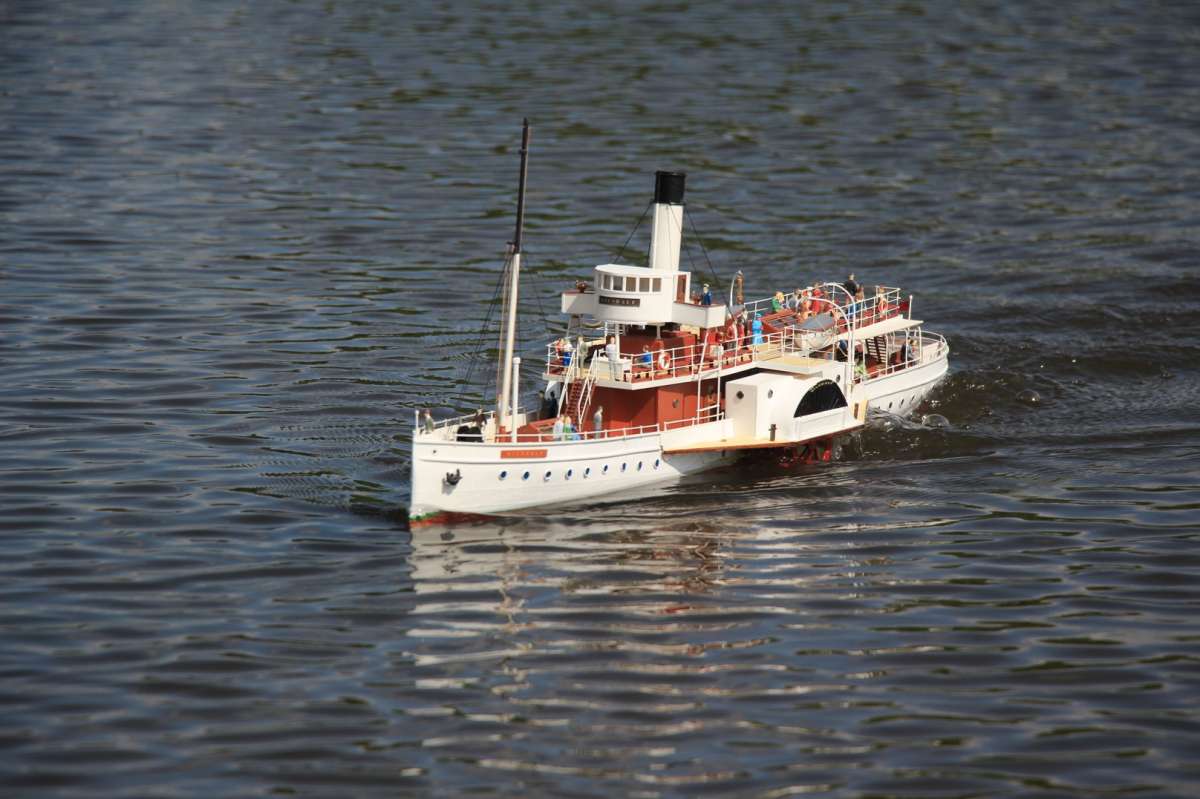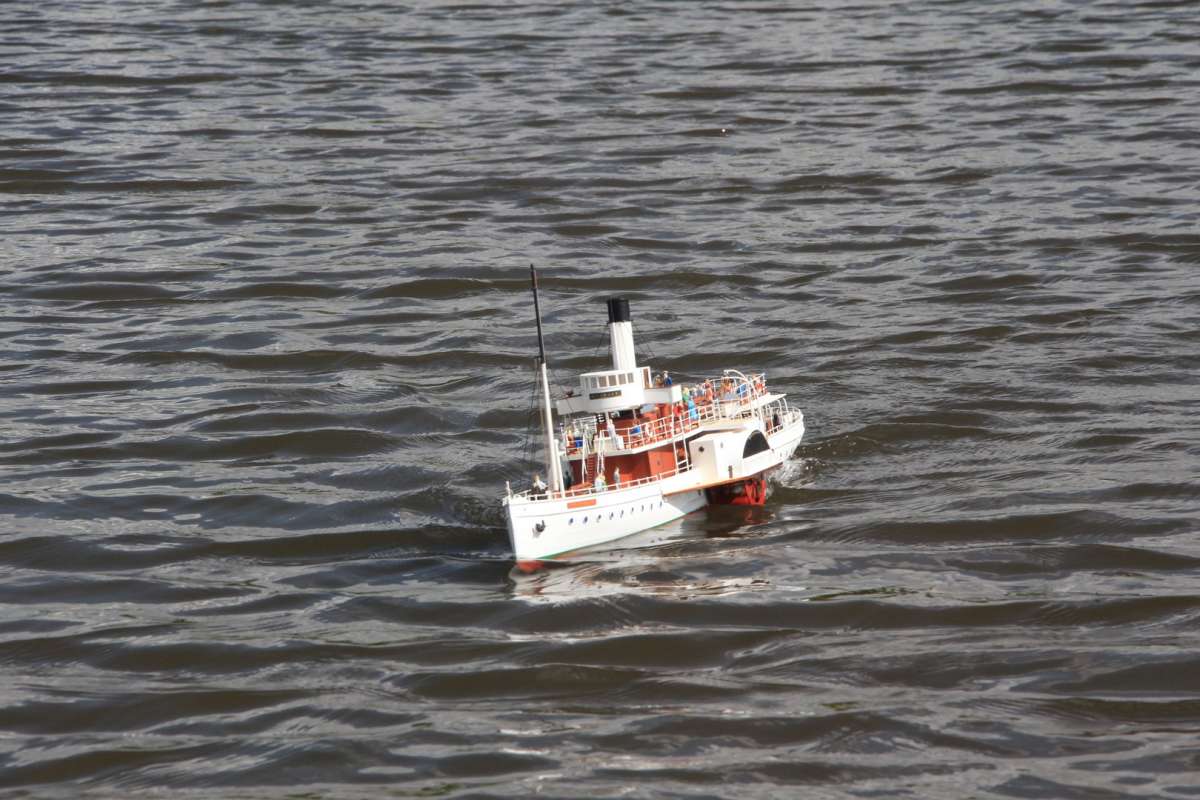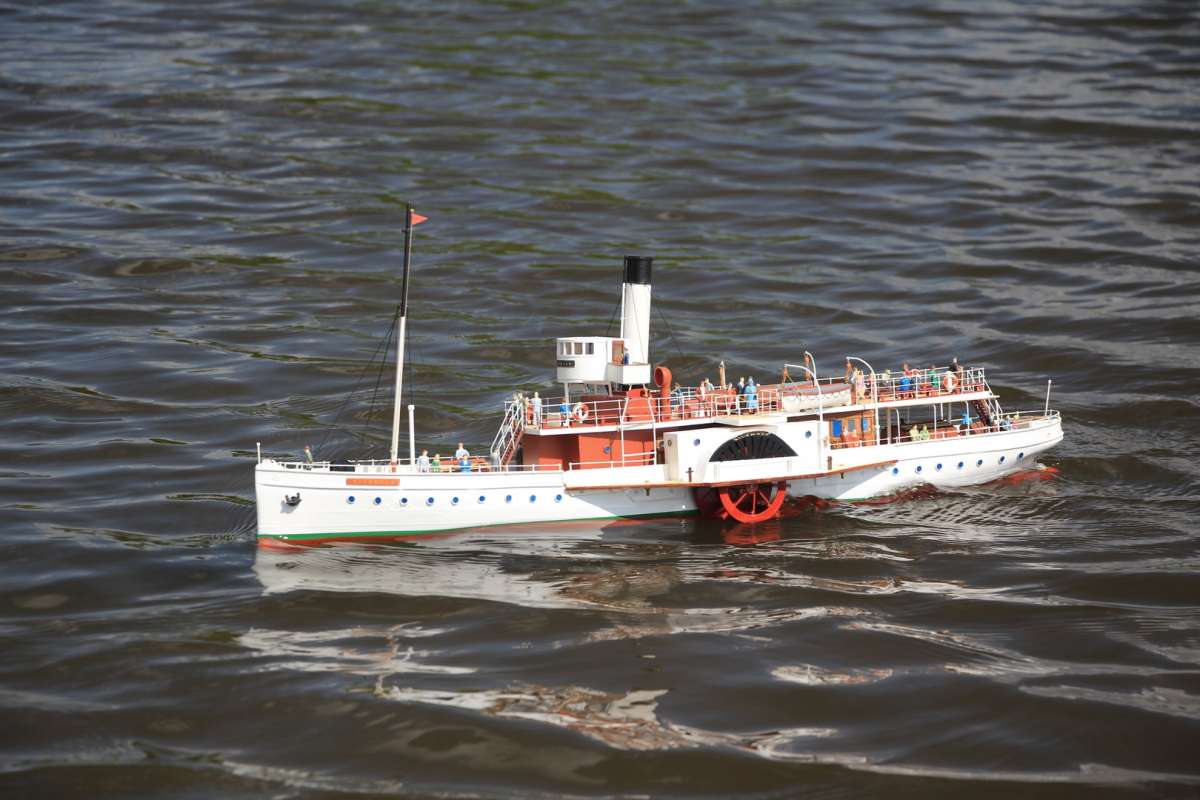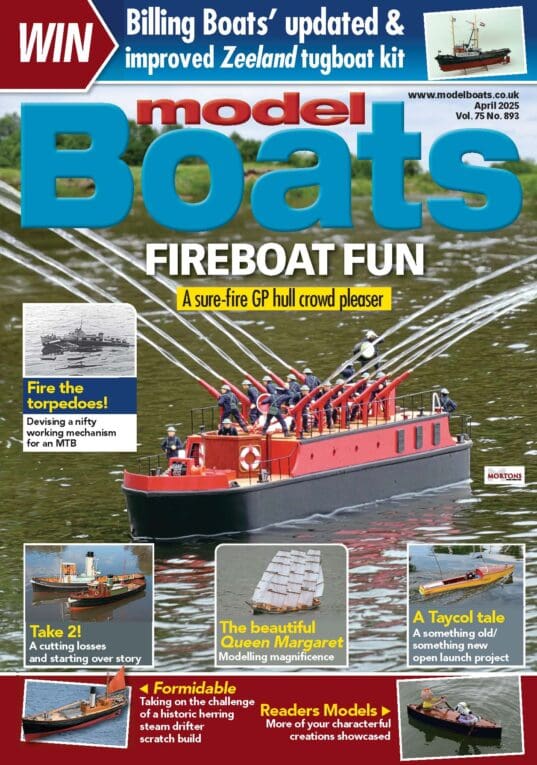Curiously enough, on its one and only outing to date my paddler seemed to be better going astern! I was handicapped by a significant breeze though which tended to push the model over in some courses so the leeward paddle ‘dug in’. I need to try it out in a calm situation but, one way and another due to other commitments and the weather, the opportunity has not yet arisen.
I think the deep keel contributes a lot to the stability of your model as it imparts a strong righting moment to offset any any irregularity caused by differential thrust from the paddles. My paddler is intrinsically stable but I think more prone to wobbling as the external ballast is simply stuck on the bottom of the hull. On its initial trip it was also prone to wobble caused by the mixer slowing down and reversing the inboard wheel on a turn. I have adjusted the mixer to give a much milder effect and am hopeful this will help smooth things out.
With regard to going astern, I think Richard is probably right that the waterflow around the hull may be the culprit. People assume that it is the rudder which turns a ship but that is not always the case. The rudder simply introduces an asymmetric effect which effectively makes the hull slightly banana shaped and it is this that causes the vessel to turn.This is why the old sailing ships had such apparently small rudders for their size. The rudder simply needed to ‘unbalance’ the hull. If course, sticking a prop in front of the rudder redirects thrust as well which pushes the stern round to accentuate the turn. A paddler doesn’t have a prop so, as Richard points out, the effect of the rudder can be unpredictable when going astern. It could be diverting waterflow unevenly, especially if it is not at dead centre. On a single screw vessel, the astern thrust will go to one side when the engine is reversed so the ship will inevitably steer (or not steer) more one way than the other! This can often be predicted and taken advantage of in both model and full size form.
My Bilsdale is a a full bodied tubby ship so is likely to behave rather differently to the long slim Glen Rosa.
There is one other possible influence which Glynn Guest has discovered in that fixed float paddle in particular can cause a sort of ‘hydraulic lock’ by scooping water up into the paddlebox which can affect thrust, that is why there are usually louvres on the side of the box to allow water and air to escape.
The Paddleducks site (which appears to be currently inaccessible) has a lot of information but some of it is contradictory which probably goes to prove that building and successfully operating a paddler model is a lot more complex than its propeller driven counterpart!
Colin



 Colin Bishop.
Colin Bishop.






